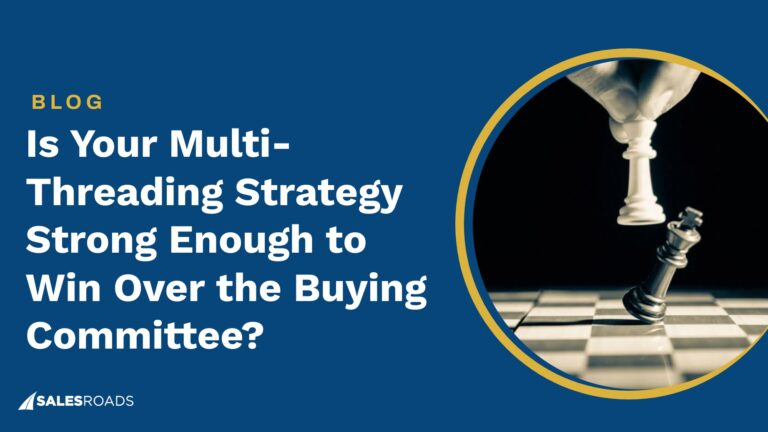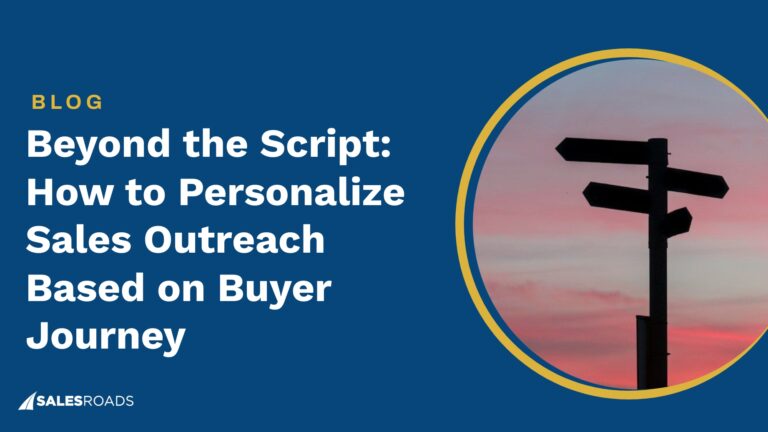A sales development model aids in the achievement of business objectives by increasing the likelihood of conversion in the shortest amount of time. This practice identifies high-quality leads in order to ensure that the sales team has plenty of opportunities to pursue.
What is Sales Development?
By focusing on the early stages of the sales cycle, sales development generates an effective pipeline for moving leads through the buyer’s journey, allowing the sales team to close more deals.
Businesses benefit from sales development by:
- Freeing up Account Executives (AEs): Lead qualification takes time and is labor-intensive. AEs can focus on closing deals by delegating lead qualification to sales development representatives (SDRs).
- Optimizing Resources: The sales development process assists businesses in allocating resources to leads that are the simplest and quickest to convert.
- Improving Brand Awareness: SDRs introduce your products and services to prospects. They build rapport with leads and help position your brand as an authority in your niche.
Sales Development Representative Role And Responsibilities
SDRs’ primary responsibility is to conduct lead qualification, which involves comparing prospects to the company’s Ideal Customer Profile (ICP) and Buyer Persona. The ICP is a research-based profile that represents the businesses that will benefit the most from your offerings. Buyer personas are fictional profiles that represent your target audience.
If the lead meets these criteria, SDRs will persuade them to meet with account executives. The AEs will then work to convert the lead into a paying customer.
| Sales Development Representative Role and Responsibilities |
| Contact leads |
| Build rapport with leads |
| Perform regular follow-ups |
| Coordinate with account executives |
SDRs’ day-to-day responsibilities can vary depending on the company, but they generally include the following tasks:
Contact leads
SDRs conduct discovery calls to determine whether a lead is a good fit. During these calls, SDRs ask about:
- Industry
- Location
- Company size
- Pain points
- Current solutions
Build rapport with leads
Building a positive rapport with leads is essential when convincing them to book an appointment with AEs. SDRs can use facts and data to showcase in-depth knowledge about the products and services they represent.
Perform Regular Follow-up
Not every lead will agree to set up an appointment on the first touch. Some may not have the time, while others may not be ready to move to the next stage of the buyer journey. In these cases, SDRs must follow up with leads to persuade them to schedule an appointment with AEs.
Coordinate with Account Executives
SDRs collaborate closely with account executives and must ensure that they never run out of qualified leads to pursue. The more qualified leads a company has, the better its chances of closing a sale.
Sales Development Representative Skills And Traits
| Skills | Traits |
| Communication | Empathy |
| Active Listening | Grit |
| Research | Resourcefulness |
| Adaptability |
SDR is an entry-level position with an annual salary of $40,000, but those working for SaaS companies typically start with a higher salary. Most applicants for this position hope to advance to the position of account executive in the future.
These are the essential skills that an SDR must develop:
- Communication: SDRs must have excellent communication skills because they interact directly with leads. They should be able to express themselves clearly and provide convincing responses.
- Active Listening: Active listening involves attentively understanding and responding to the person you’re speaking with. This skill allows SDRs to make their calls a two-way conversation instead of making them feel like interviews.
- Research: SDRs must be knowledgeable in their niche space. They need to research their target audience’s pain points to have the right data and statistics in their scripts. Researching also prepares them to give the best answer to leads’ questions.
- Adaptability: Companies can change their sales playbook or practices at any time. An effective SDR must adapt to these changes and integrate feedback from managers to improve performance.
Skills can be acquired through rigorous training, but traits take time and consistency to develop. When hiring an SDR, it’s recommended to choose someone who already has the following characteristics:
- Empathy: Empathy is essential for salespeople to build rapport with leads.
- Grit: SDRs with grit and determination are less likely to get discouraged when facing rejections or setbacks.
- Resourcefulness: SDRs will encounter different types of leads. Some are easy to talk to, while others require more patience and understanding. SDRs who are resourceful can quickly solve leads’ problems rather than becoming flustered and making a bad impression.
Sales Development VS. Business Development
Business development identifies new opportunities for long-term growth by building positive relationships with partners, while sales development concentrates on filling the sales pipeline with qualified leads.
The day-to-day tasks of business development representatives (BDRs) involve:
- Connecting with decision-makers
- Establishing rapport with leads
- Researching new market segments
- Understanding target audience
- Monitoring new market trends
SDRs don’t actively look for leads and close deals. Instead, they focus on filtering the leads generated by the marketing team. Their day-to-day tasks include:
- Lead qualification
- Establishing rapport with lead
- Appointment setting
Sales Development Representative Metrics
Knowing whether your sales development program is working is essential to emulate good practices and pinpoint areas for improvement. You can use the following metrics to evaluate sales development:
Calls Made
The calls made metric can reflect the effectiveness of an individual SDR. It is calculated based on the average meeting scheduled rate for each team member. Those failing behind the team average must receive coaching to improve performance.
You can tag your calls as:
- Connected
- Not answered
- Qualified
- Disqualified
- Initial meeting scheduled
To use this metric for emails made, you can adapt the categories to:
- Replied
- Not replied
- Qualified
- Disqualified
- Initial meeting scheduled
Booked Appointments
The number of appointments SDRs book is a clear indication of whether they’re hitting their targets or not. This number allows managers to see if their team can supply the demand of the sales pipeline.
SDRs are responsible for tracking their booked appointments, indicating meeting outcomes, and determining whether the lead is a no-show, qualified, or disqualified.
You can also use this metric to identify the top-performing SDRs in your team and incentivize their best practices.
Future Meetings
The number of upcoming meetings indicates the strength of the next sales cycle. If it falls short of expectations, sales development managers can take steps to improve the team’s output. Many CRM tools have features that generate reports for future meetings automatically.
Sales Accepted Opportunity (SAO)
SAO is one of the most important metrics for an SDR. A higher SAO rate indicates that many successful deals came from booked appointments.
Revenue
By tracking the revenues generated by SDR appointments, you’ll be able to see how the sales development team contributes to the company’s bottom line. If many of your scheduled appointments result in completed transactions, your earnings are likely to rise.
In-house VS. Outsourced Sales Development
There are two ways to implement a sales development model in your company. You can build a sales development team from scratch or outsource it from a third-party service provider.
In-house Sales Development
| Pros | Cons |
| Transparency | High initial investment |
| Full control | Lengthy hiring process |
| Expert knowledge | Extensive training |
These are the benefits of building an in-house sales development team:
- Transparency: You can get real-time updates about your in-house team performance, as they’re under your direct supervision.
- Full Control: You have total control over the sales development team’s hiring process and day-to-day operations.
- Expert Knowledge: In-house SDRs exclusively work for you, allowing them to become experts about your offerings and niche space.
The downsides of in-house sales development include:
- High Initial Investment: Hiring and training costs are not the only expenses companies will shoulder when building an in-house sales development team. They’ll also have to provide training, working space, tools, and equipment.
- Lengthy Hiring Process: Determining whether a candidate has the necessary skills and traits of an effective SDR requires a lot of time. Short-listed applicants must undergo several skills and aptitude assessments to see if they are the right fit for the job.
- Extensive Training: Even if you hire SDRs with all the necessary skills and traits for success, they still have to get familiar with your sales playbook. They’ll also need time to gain expert knowledge about your niche.
Outsourced Sales Development
| Pros | Cons |
| Save on cost | Quality issues |
| More flexibility | Insufficient Business Knowledge |
| Fast launch | Lack of control |
Outsourcing a sales development program from third parties is an excellent idea if you want to:
- Save on Cost: You don’t have to think about the cost of hiring, training, and equipment, as it’s all included in the outsourced firm’s service fee.
- More Flexibility: If you think sales development is not working for your company, you can pull the plug on the program without losing much money or having to figure out what to do about your employees.
- Fast Launch: Outsource firms have teams of SDRs on standby, ready to work on your sales development program.
Outsourcing sales development can also have pitfalls, including:
- Quality Issues: This is a big concern when outsourcing services, as you have little to no say over the SDRs assigned to your account.
- Insufficient Business Knowledge: SDRs from outsourcing firms can be skilled and experienced but are not necessarily experts in your niche. This can affect their performance quality when calling leads.
- Lack of Control: You have no control over the day-to-day operation of the SDRs. You also can’t make real-time changes because you’ll usually only get periodic reports on their performance.
You can avoid the downsides of outsourcing by choosing a reputable service provider. Ensure that the company you hire invests time and effort in getting familiar with your sales playbook and is transparent about their process.
Tips For Implementing Sales Development Into Your Business
Sales development programs vary depending on the company’s industry and target audience. Here are the best practices when implementing sales development into your business:
Clearly Define Your ICP and Buyer Profile
Creating an ICP and a buyer profile will help SDRs better understand their target audience.
These are the steps on how to make an ICP:
- Step #1: Describe who your ideal customers are. Take a closer look at your current customer base and determine who benefits the most from your offerings.
- Step #2: Interview your top customers about their buying process and how they benefit from your product and services.
- Step #3: Determine the unique characteristics of your ideal customers based on the data you have collected. You’ll see a typical pattern among your top customers, which you can use to make your ICP.
A buyer persona is a research-based profile of your target customers. Here are the steps on how to make one:
- Step #1: Research your target audience and understand their pain points and buying process.
- Step #2: Organize the data you collected from the research. Decide how many profiles you will make and segment your personas based on job titles and industries.
- Step #3: This is the fun part: create a name and a backstory for every buyer persona. Define their goals and challenges when making a purchase.
Determine Who Your “Sales Qualified Leads (SQL)” Are
Sales reps must have a clear definition of SQL to create an efficient lead qualification process. Defining an SQL will also help align the goals and efforts of the sales and marketing team.
Hire A Great Manager
A sales development program is only as good as the manager who leads it. A good sales development manager must have all the skills and traits of an effective SDR on top of outstanding leadership skills.
Bottom Line
Sales development supplies the sales pipeline with highly qualified leads that takes less time and effort to convert. When done right, it can unburden AE, allowing them to focus on closing deals and increasing revenue.










